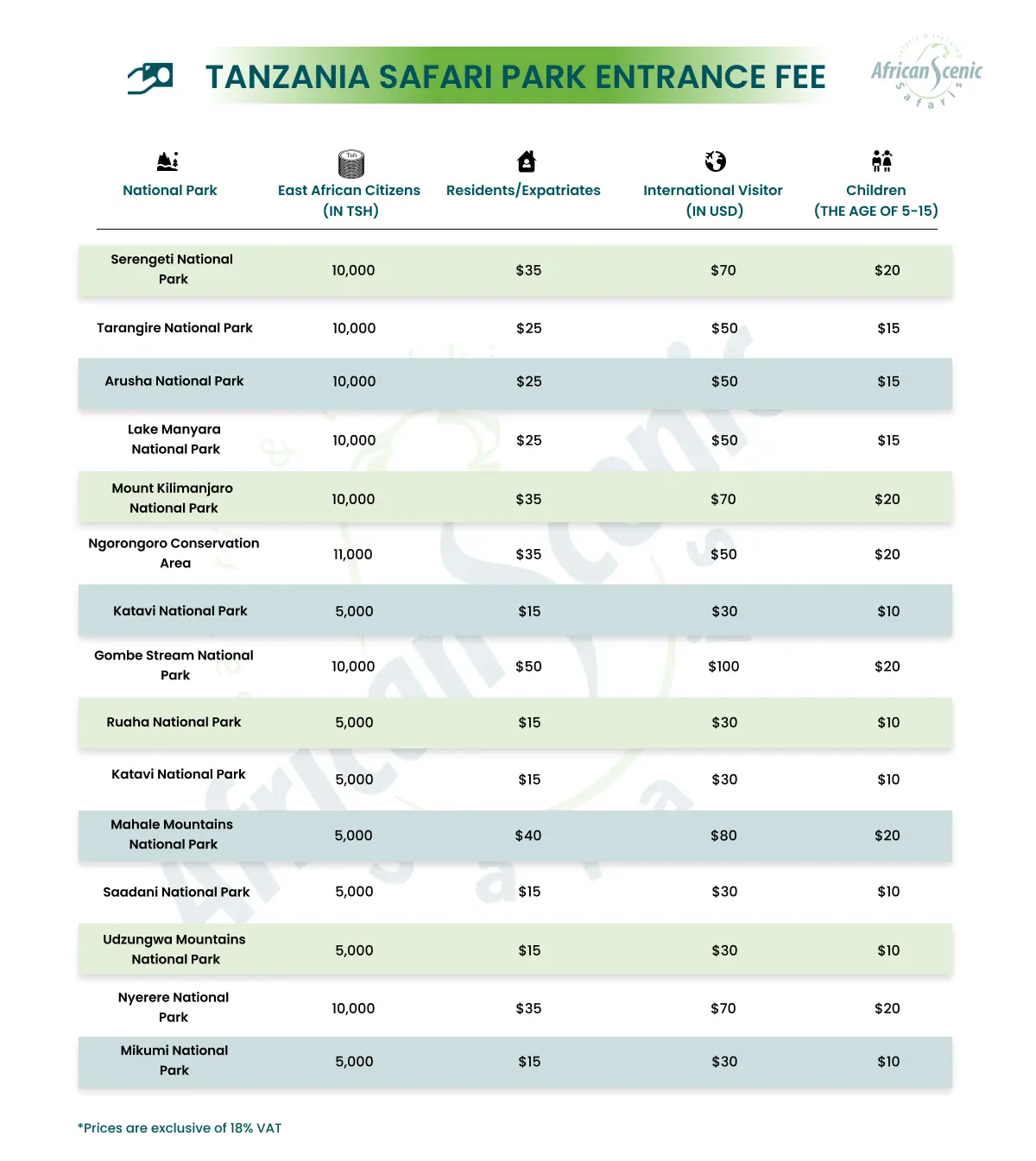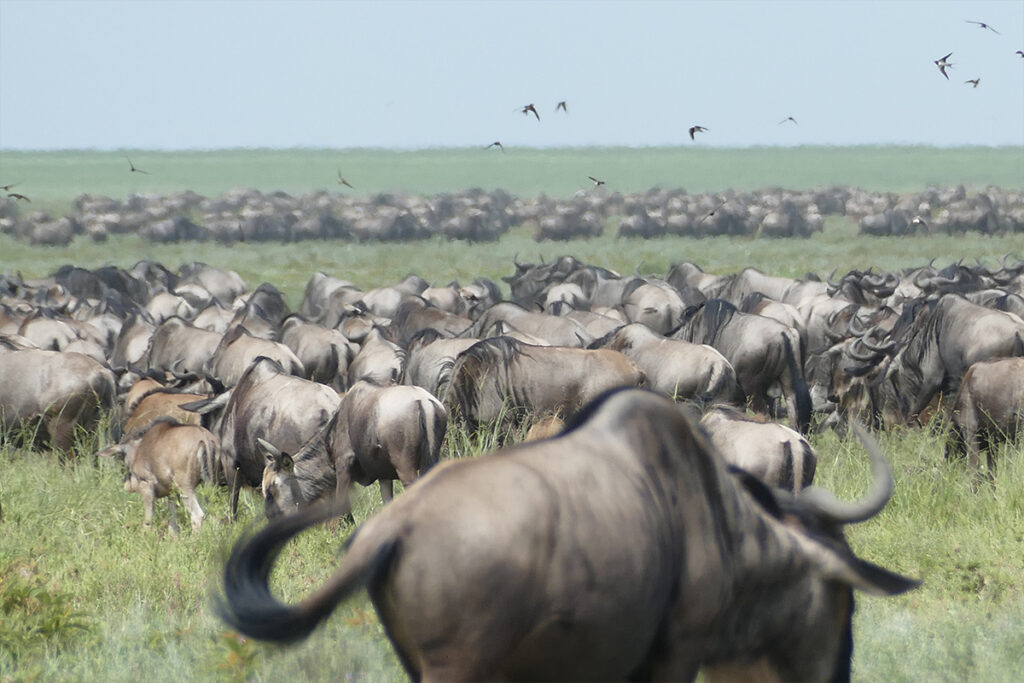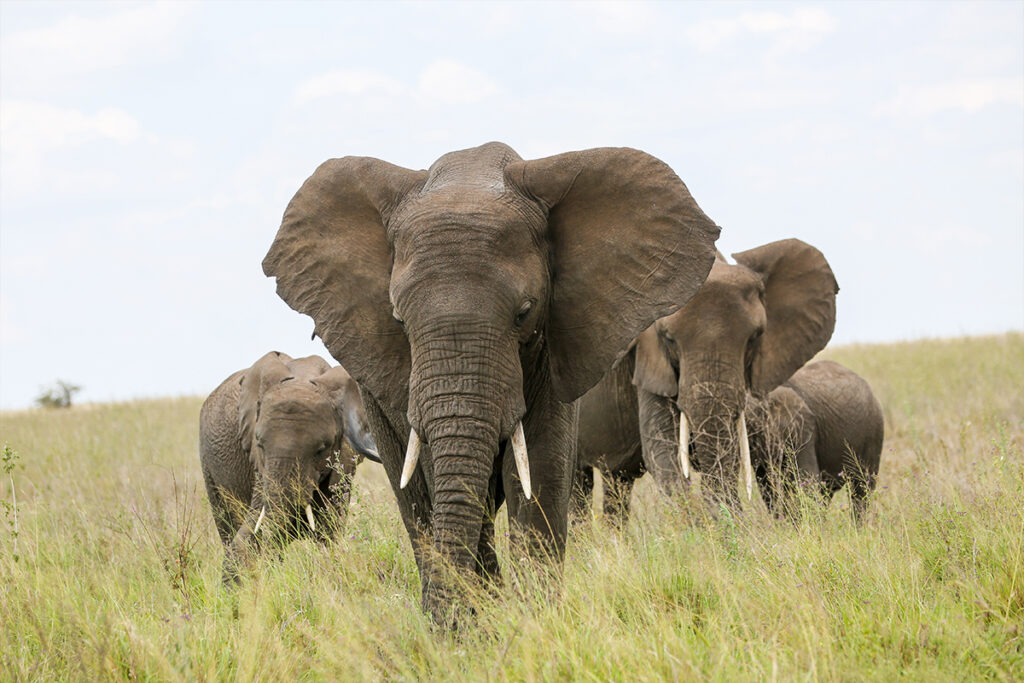Exploring the wild, untamed beauty of Tanzania on a 7-day safari can be a dream come true for many, yet it may remain a distant reality for some due to cost considerations. It’s fascinating to note that Tanzania is known for not only its iconic wildlife but also for offering some of the more affordable safari options compared to other African destinations. This makes the experience tantalizingly within reach for adventurers yearning to witness the Great Migration or endless savannahs firsthand.
Diving deeper into the factors that influence safari costs, it’s crucial to understand the variance stemming from accommodation choices and travel itineraries. Typically, a mid-range safari package might cost anywhere from $2,500 to $3,500 per person, enveloping comfortable lodges, guided tours, and meals. The pricing often reflects the inclusivity of park fees, seasonality, and particular routes chosen through renowned conservation areas like Serengeti and Ngorongoro Crater.

Tanzania Safari Cost for 7 Days: Essential Information
Planning a Tanzania safari for 7 days includes several important factors that can influence the overall cost. The time of year you choose plays a significant role; peak seasons like the Great Migration can see prices skyrocket. Off-peak months, however, often offer more affordable rates while still providing incredible wildlife experiences. According to here is the article, understanding the visa requirements is also essential to avoid unexpected fees. Additionally, the quality of accommodation, from budget campsites to luxury lodges, directly impacts the total expenses.
A vital aspect of budgeting for your trip is understanding the range of costs involved. Here’s a simple outline:
- Budget Safaris: $1,400 to $2,100
- Mid-range Safaris: $2,500 to $3,500
- Luxury Safaris: $5,000 to $7,000+
Each category offers different levels of comfort, guided services, and meal plans, influencing your overall experience.
Aside from the basic safari packages, additional costs should also be considered. Park entrance fees, which can go up to $70 per person per day, are a major expense. Moreover, internal flights, transportation, and optional tours such as hot air balloon rides can significantly add to your budget. According to this post, including sustainable travel options can be both enriching and cost-effective.
Properly planning your finances ensures you enjoy each moment of your trip without financial worry. To make it easier, here’s a breakdown:
| Category | Cost Range (USD) |
|---|---|
| Accommodation | $50 – $500 per night |
| Park Fees | $50 – $70 per day |
| Internal Flights | $100 – $300 |
| Optional Tours | $200 – $700 |
This detailed understanding helps in making informed decisions and enjoying a seamless safari adventure.
Factors Influencing Safari Cost
The cost of a safari in Tanzania can vary greatly due to several key factors. One of the most significant elements is the accommodation type you choose for your stay. Lodges and camps range from basic to ultra-luxurious, each offering different amenities and experiences. This choice alone can majorly impact your budget. Additionally, the time of year affects prices, with peak tourist seasons being more expensive.
Travel distance and transportation also play a crucial role in determining safari costs. The location of the wildlife parks relative to major cities may require charter flights or lengthy car transfers. These costs add up, impacting your overall expenditure. Even within the parks, you might incur extra transportation costs for tours, which can vary in pricing based on vehicle type and group size.
Another essential consideration is the type of safari you opt for, whether it be a private or group tour. Private tours offer a more personalized experience but generally come with a higher price tag. On the other hand, group tours can be more economical, as costs are shared among participants. Choosing between these options can significantly influence your overall safari budget.
Additional activities beyond game drives, like guided walking tours or cultural village visits, can also change the bottom line. You may find yourself tempted by unique experiences that add to your itinerary. Here is a sample list of common additional activities:
- Hot Air Balloon Rides
- Bush Meals
- Night Game Drives
- Guided Nature Walks
Each of these offers unique views and memories but requires planning to fit within your budget.
Range of Costs for Different Safari Categories
Tanzania offers various safari experiences, each catering to different budgets and preferences. A budget safari can be an ideal choice for those seeking adventure without luxury. Prices typically range from $1,400 to $2,100 for a 7-day tour. These packages usually include basic camping or simple lodges, providing all the essentials. They focus on delivering quality experiences without the frills.
For those seeking a little more comfort, mid-range safaris are available. These tours generally cost between $2,500 to $3,500 for the same duration. Accommodations in this category often include lodges and tented camps with more amenities. These safaris balance comfort and cost, offering a great mix of value and experience. They’re perfect for travelers wanting a memorable journey without breaking the bank.
Luxury safaris represent the high-end of the spectrum and provide an exceptional level of service. These can start from about $5,000, going upwards depending on the opulence desired. Such packages include top-tier lodges with gourmet meals and exclusive game drives. In luxury safaris, every detail is meticulously planned to ensure a lavish and seamless adventure. They cater specifically to those looking to indulge during their time in Tanzania.
Considering the range of options, it’s clear Tanzania offers something for everyone. Here’s a quick comparison:
| Safari Category | Cost Range (USD) | Accommodations |
|---|---|---|
| Budget | $1,400 – $2,100 | Basic Camping/Lodges |
| Mid-range | $2,500 – $3,500 | Comfortable Lodges/Camps |
| Luxury | $5,000+ | High-end Lodges/Tented Camps |
Each style offers a unique way to experience the incredible wildlife and landscapes of Tanzania, allowing everyone to find a safari that fits their budget and desires.
Cost Breakdown for Key Safari Elements
Understanding the costs associated with a Tanzania safari involves examining each key element of the journey. Accommodation often represents the largest portion of the budget. Prices can range from $50 per night for budget camping to $500 or more for luxury lodges. The amenities and services provided by these accommodations significantly impact overall expenses. Hence, travelers should choose options aligning with their comfort preferences and budget limits.
Transportation is another substantial cost factor in a safari trip. This includes flights to and from Tanzania, as well as internal transportation. Internal flights can cost anywhere from $100 to $300 per trip, while private vehicle rentals or group tours can vary widely. The distance covered and the type of vehicle used—such as 4×4 jeeps or minibuses—significantly influence the pricing. These costs must be factored into the overall budget planning for the safari.
Park entry fees are also vital to consider, as they are mandatory for accessing wildlife reserves. These fees can range between $50 and $70 per day, per person. For a 7-day safari, this adds up quickly. Some parks might also charge vehicle entry fees or fees for specific activities. Knowing these details helps in creating a thorough and accurate budget plan.
Additional activities beyond the standard game drives can enhance the safari experience but come with extra costs. Optional activities like hot air balloon rides, bush dinners, and night safaris can add $200 to $700 to your budget. These activities provide unique perspectives and memorable experiences. Opting for a few of these can make the trip more exciting and enriching.
When considering meal plans, options vary based on the chosen safari package. Some packages include all meals, while others might only cover breakfast and dinner. Meals in lodges can range from $10 for simple fare to $50 or more for gourmet dining. It is essential to clarify meal inclusions with the safari provider to avoid unexpected expenses. Having a clear understanding of these costs ensures a smoother and more enjoyable safari experience.
Money-Saving Tips for Planning a Tanzania Safari
Planning a budget-friendly Tanzania safari requires strategic measures to cut costs while enjoying the adventure. One effective approach is to travel during the low season when prices drop significantly. The off-peak period often sees discounts on accommodation and tours. This also means fewer tourists and a more intimate wildlife experience. Booking early or last-minute deals can further reduce costs.
Opting for group tours instead of private safaris is another money-saving strategy. Group tours distribute the costs among several travelers, making them more affordable. These tours still offer excellent wildlife viewing and knowledgeable guides. Sharing transportation and accommodations in this manner keeps expenses in check. This approach doesn’t compromise the quality of the adventure.
Choosing mid-range lodges or tented camps over luxury accommodations can save a lot. These mid-tier options offer comfort and essential amenities without the hefty price tag. Moreover, staying in lodges or camps just outside major parks can reduce costs. They often provide similar experiences and access to wildlife with added savings. Ensure to balance cost with the need for safety and convenience.
Preparing in advance for additional expenses, such as park entrance fees and meals, helps manage the budget better. Many safari packages might not include all these costs upfront. Bringing snacks and drinks to minimize meal expenses can also be a practical approach. Planning excursions or activities carefully can avoid unexpected charges. Researching and knowing what to expect before embarking on the trip is key.
Finally, use reputable local safari operators that offer competitive prices without skimping on quality. They often provide packages tailored to different budgets and preferences. Reading reviews and comparing options helps find the best deals. Aligning with trustworthy providers ensures a smooth and enjoyable safari experience. The right choice can balance savings and adventure seamlessly.
Making the Most of Your Tanzania Safari Within Budget
Maximizing your Tanzania safari experience while staying within budget is entirely possible with smart planning. Focus first on the essentials, ensuring that accommodation and transportation are booked at the best possible rates. Opt for mid-range lodges that provide comfort without extravagance. Utilize public transportation or shared safari vehicles. This will stretch your budget further.
Immerse yourself in the local culture and explore free or low-cost activities. Visiting local markets and attending cultural events enrich your trip without adding significant costs. Engaging with local communities can offer unforgettable experiences. These deeper connections often don’t have a price tag. Such activities enhance your understanding and enjoyment of Tanzania.
Packing wisely can also help avoid unforeseen expenses. Ensure you bring necessary items like binoculars, appropriate clothing, and personal care products. This reduces the need to buy overpriced supplies on location. A well-prepared packing list ensures you have everything required. This reduces the risk of incurring unexpected costs during your safari.
Making informed choices about meals can significantly impact your budget. Check if your accommodations include meals, or if it’s more economical to eat at local restaurants. Where meals aren’t included, explore local eateries that offer great food at lower costs. Many lodges provide breakfast, allowing you to save on one meal per day. Sampling local cuisine is also a fantastic way to immerse yourself in the culture.
Lastly, prioritize and plan for must-see attractions and activities to make the most memorable experiences. Focus on a few key activities rather than trying to do everything. This ensures you enjoy high-quality experiences within your budget. A well-organized itinerary can highlight the best of Tanzania. Proper planning ensures a fulfilling and budget-friendly adventure.

Frequently Asked Questions
Planning a Tanzania safari involves many considerations. Here are some frequently asked questions to help guide you through the process.
1. What is the best time to go on a safari in Tanzania?
The best time to visit Tanzania for a safari is during the dry season, from June to October. This period is ideal because wildlife is easier to spot near water sources, and the weather is pleasant.
The Great Migration also occurs during these months, offering a spectacular view of thousands of animals. However, this peak season means higher prices and more tourists, so plan accordingly for an optimal experience.
2. Do I need vaccinations before traveling to Tanzania?
Yes, certain vaccinations are recommended before traveling to Tanzania. Common vaccines include those for yellow fever, typhoid, and hepatitis A and B.
It is best to consult with your healthcare provider well in advance to ensure you receive the necessary shots. Additionally, taking malaria prophylaxis is advisable to protect against mosquito-borne illnesses.
3. What should I pack for a Tanzania safari?
Packing for a Tanzania safari requires some essentials to ensure comfort and safety. Items to include list:
- Lightweight clothing
- Comfortable walking shoes
- Insect repellent
- Binoculars and a camera
- Personal medications
It is also important to carry sun protection, like a hat and sunscreen, to guard against the sun’s harsh rays while on game drives.
4. How safe is it to go on a safari in Tanzania?
Going on a safari in Tanzania is generally safe, especially when following guidelines and precautions. Reputable safari operators provide trained guides who are knowledgeable about the terrain and wildlife.
Staying within marked areas and following your guide’s instructions will ensure a secure experience. Crime rates in national parks are low, but it’s always wise to remain vigilant and aware of your surroundings.
5. Are credit cards accepted in Tanzania for safari payments?
Credit cards are accepted in many hotels and lodges in Tanzania, especially in popular safari destinations. However, it’s important to note that some remote areas may have limited access to card payment facilities.
Carrying some cash in US dollars or Tanzanian shillings for tips, souvenir shopping, and emergencies is advisable. Always inform your bank about your travel plans to avoid any issues with card transactions while abroad.



